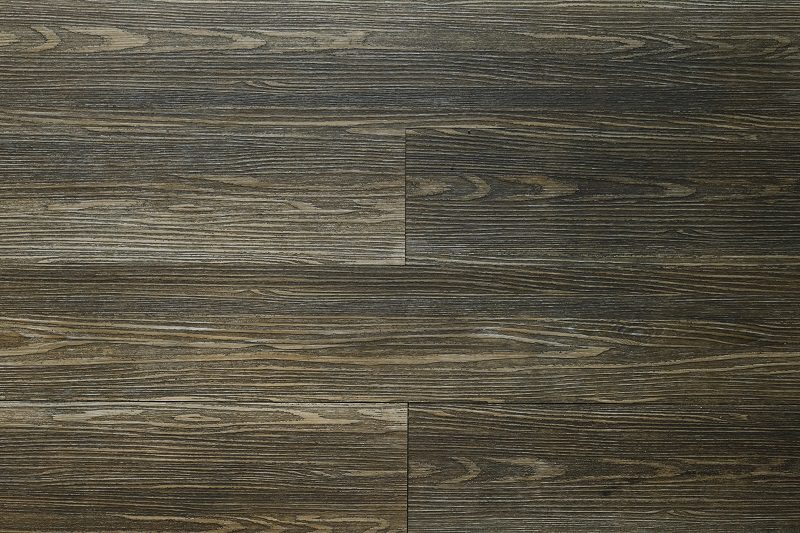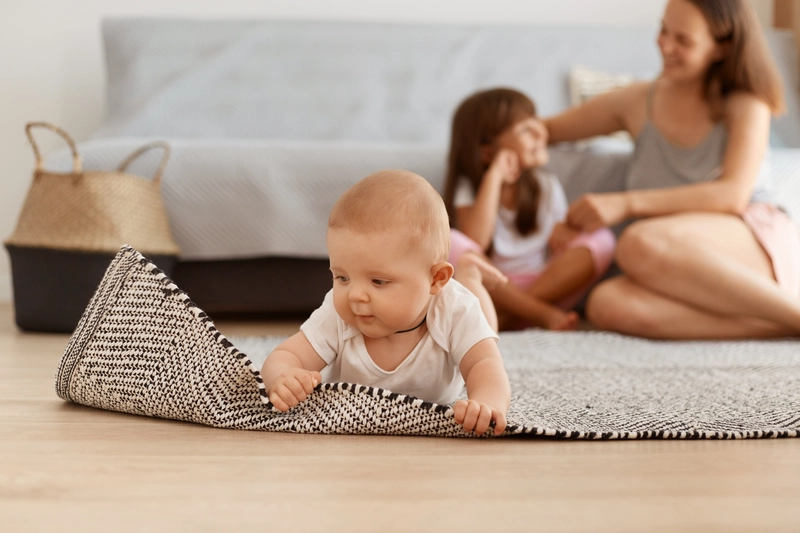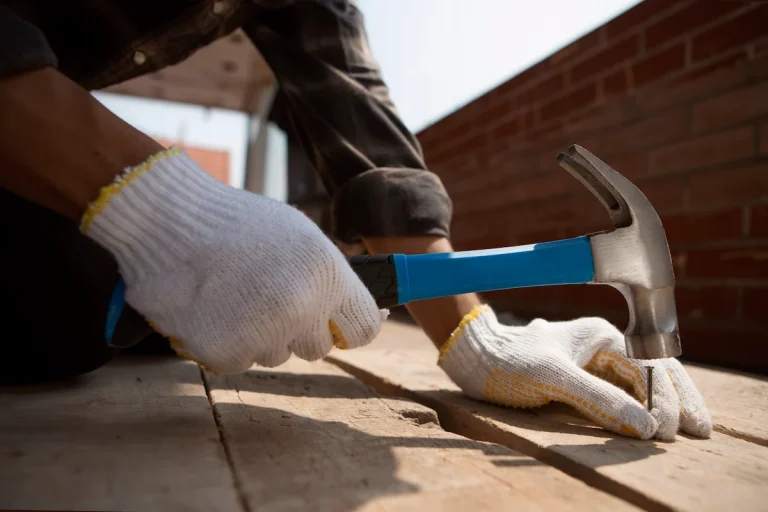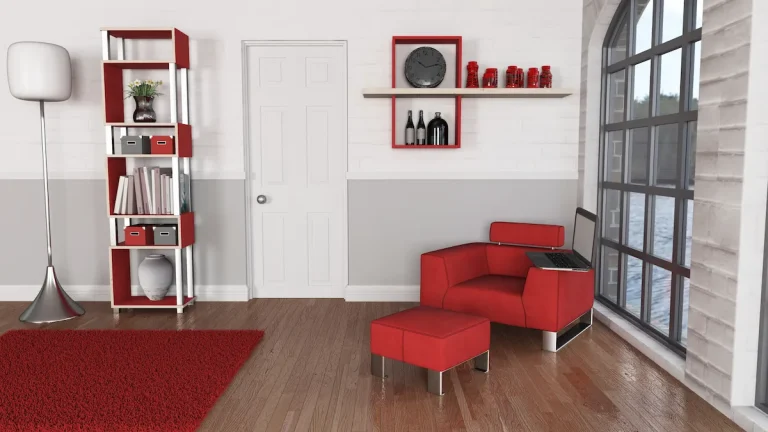Non-slip flooring is an essential feature in both residential and commercial spaces to ensure safety and prevent accidents. There are various types of non-slip flooring available, from rubber and vinyl to hardwood and concrete, making it a crucial decision to choose the right type of flooring.
Factors like slip resistance rating, durability, maintenance, cost, and aesthetics need to be carefully considered. In this article, we will discuss the importance and different types of non-slip flooring, also the key factors to keep in mind when making your selection.
What Is Non-Slip Flooring?
Non-slip flooring refers to surfaces designed to prevent slips, trips, and falls, especially in high-traffic areas like restaurants and commercial kitchens. It provides enhanced safety by offering increased traction and grip to prevent accidents.
Implementing safety flooring not only reduces the risk of injuries but also complies with safety regulations set by organisations like HSE. Various materials such as rubber, vinyl, and epoxy are commonly used to create anti-slip flooring, each offering unique benefits like durability and easy maintenance.
Why Is Non-Slip Flooring Important?
Non-slip flooring is crucial in various settings as it plays a significant role in preventing accidents and maintaining workplace safety standards set by HSE. It reduces the risk of injuries and ensures a secure environment for both employees and customers.
In line with safety regulations, HSE emphasises the use of anti-slip flooring to comply with rigorous safety standards. This type of flooring is designed with textured surfaces and materials that offer enhanced traction, especially in high-traffic areas prone to spills or moisture.
By adhering to these safety guidelines, businesses not only prioritise the well-being of their workforce but also mitigate the potential for costly liability claims resulting from slip and fall accidents. Different regions around the world have their specific safety standards in place, making it essential for establishments to stay updated and compliant with these regulations.
Types of Non-Slip Flooring
Non-slip flooring comes in various types to suit different needs, including options like Rubber Flooring, Vinyl Flooring, and Epoxy Flooring.
1. Rubber Flooring
Rubber is a common choice for non-slip surfaces due to its excellent slip resistance rating and durable nature. It is ideal for high-traffic areas that require a reliable and long-lasting flooring solution.
One of the main benefits of rubber flooring is its ability to provide traction and reduce the risk of slips and falls, making it a safe option for both residential and commercial settings. Rubber flooring is easy to maintain and clean, requiring minimal effort to keep it looking fresh and new. Its durability ensures that it can withstand heavy foot traffic and resist wear and tear over time.
Whether in gyms, playgrounds, or kitchens, rubber flooring offers a versatile solution that caters to various environments where slip-resistant properties are crucial for safety.
2. Vinyl Flooring
Vinyl is another popular choice for non-slip solutions, known for its easy maintenance and cost-effectiveness. It offers a balance between slip resistance, affordability, and simple cleaning requirements.
One of the key advantages of vinyl flooring is its durability, making it ideal for high-traffic areas like kitchens and bathrooms. Its water-resistant properties make it perfect for areas prone to spills or moisture. Additionally, linoleum flooring comes in a wide range of designs and styles, allowing homeowners to achieve the look they desire without breaking the bank.
See product: Karndean Art Select Oak Royale Glacier Oak
3. Carpet Flooring
Carpet flooring provides both aesthetic appeal and non-slip properties, making it a versatile choice for various settings. Its blend of durability and visual appeal adds a touch of comfort while ensuring safety.
In Safe Environments, such as homes with children or elderly individuals, carpet flooring offers an added layer of security against slips and falls. The soft texture and cushioning effect not only provide a cosy feel but also reduce the impact in case of accidents.
In bustling commercial spaces in cities, the visual enhancement brought by carpets can elevate the overall ambience and create a welcoming environment for customers and employees alike.
See product: Abingdon Deep Feeling Americano
4. Epoxy Flooring
One of the best anti-slip flooring types is epoxy flooring. This type of flooring offers excellent slip-resistance properties along with a wide range of aesthetic options, making it a popular choice for non-slip surfaces. Its customisable designs and durability make it suitable for various environments.
One of the key benefits of epoxy flooring is its ability to create Safe Environments by providing a secure surface that minimises the risk of slips and falls. This feature is particularly valuable in industries where safety is paramount, such as healthcare facilities, manufacturing plants, and commercial kitchens. The seamless nature of epoxy floors also contributes to their cleanliness and hygiene, as they are easy to maintain and resistant to stains and chemicals.
5. Concrete Flooring
Concrete flooring is a durable non-slip solution known for its excellent slip resistance rating and longevity. It is a versatile option suitable for industrial and commercial spaces that require robust flooring.
The slip-resistant qualities of concrete flooring make it ideal for environments where safety is paramount, such as warehouses, factories, and food processing plants. The durability of concrete flooring ensures that it can withstand heavy foot traffic, impact from machinery, and exposure to harsh chemicals, making it a reliable choice for high-traffic areas. Precision Flooring Services offers expert installation and maintenance, enhancing the longevity and performance of concrete floors in various industries.
See product: Luvanto Click Plus Weathered Concrete
6. Ceramic or Porcelain Tile Flooring
Ceramic or porcelain tile flooring combines aesthetic appeal with a good slip resistance rating and ease of maintenance. It is a popular choice for areas where both safety and visual appeal are important considerations.
One of the key advantages of ceramic or porcelain tile flooring is its versatility in different settings. Whether used in bathrooms, kitchens, hallways, or outdoor patios, these tiles offer a timeless elegance that complements various design styles.
Plus their aesthetic appeal, these tiles are known for their slip-resistant properties, providing a safe walking surface even in high-traffic areas. This makes them ideal for commercial spaces or homes where safety is a top priority.
Regarding maintenance, ceramic or porcelain tiles are relatively easy to clean. Regular sweeping and occasional mopping are usually sufficient to keep them looking pristine. For more stubborn stains, a gentle cleaning solution can be used without damaging the tiles’ surface.
7. Natural Stone Flooring
Natural stone flooring offers a unique blend of aesthetics, slip resistance, and durability, making it a sought-after choice for non-slip applications. Its natural variations add a touch of elegance to any space.
When considering Safe Environments, natural stone flooring stands out for its ability to maintain traction, reducing the risk of slips and falls. Whether in a residential setting where families want to ensure the safety of their loved ones or in commercial spaces with high foot traffic, this flooring option provides a reliable surface that promotes stability.
The durability of natural stone flooring further enhances its appeal for areas prone to heavy use. Safe Environments benefit greatly from the long-lasting nature of materials like marble, granite, or slate, which can withstand wear and tear without losing their charm over time.
The aesthetic value of natural stone flooring is versatile, complementing various design styles. From rustic settings to modern interiors, the rich textures and earthy tones of this flooring create an inviting atmosphere while meeting the practical need for a non-slip surface.
8. Laminate Flooring
Laminate flooring offers a cost-effective solution with a wide range of aesthetic options to suit different preferences. Its affordability and visual versatility make it a popular choice for non-slip surfaces.
The beauty of laminate flooring lies in its ability to mimic the look of natural materials like hardwood or stone without a high price tag. This makes it a practical choice for both residential and commercial spaces. Laminate flooring is easy to clean and maintain, adding to its long-term cost-effectiveness by reducing the need for costly upkeep. Its durability ensures that it can withstand heavy foot traffic, making it ideal for high-traffic areas.
See product: Elka 8mm V-Groove Country Oak
9. Cork Flooring
Cork flooring combines excellent slip-resistance properties with easy maintenance requirements, providing a sustainable and safe flooring solution. Its natural texture adds warmth and comfort to spaces.
One of the remarkable features of cork flooring is its slip-resistant qualities, making it an ideal choice for areas prone to spillage or moisture. The material’s natural grip helps prevent accidents and enhances safety in homes and commercial settings.
Cork flooring is known for being eco-friendly due to its sustainable harvesting methods. The production process of cork does not harm trees, allowing for a renewable and environmentally friendly flooring option.
In terms of maintenance, cork floors are relatively easy to care for, requiring regular sweeping and occasional damp mopping to keep them clean and well-preserved. This low-maintenance aspect adds to the overall appeal of cork flooring.
10. Hardwood Flooring
Hardwood flooring blends classic elegance with good slip-resistance properties and durability, making it a timeless choice for non-slip applications. Its natural beauty enhances the ambience of any space.
Hardwood flooring is known for its exceptional durability, ability to withstand heavy foot traffic and everyday wear and tear. This makes it a practical and long-lasting option for both residential and commercial settings. The versatile design of hardwood flooring allows it to complement a wide range of interior styles, from traditional to modern decor. Its easy maintenance requirements, requiring simple cleaning and occasional refinishing, contribute to its appeal for busy households and businesses alike.
See product: Elka 12.5mm Real Wood Woodland Oak
Factors to Consider When Choosing Non-Slip Flooring
When selecting anti-slip flooring for bathrooms or any other rooms, it is essential to consider factors such as Slip Resistance Rating and Durability. These aspects determine the safety and longevity of the flooring in various environments.
For instance, in high-traffic areas like restaurants and commercial kitchens, where spills and wet floors are common, a high Slip Resistance Rating becomes crucial to prevent accidents and maintain a safe working environment. Durability plays a vital role in reducing maintenance costs and ensuring the flooring stays intact despite constant use and cleaning. By prioritising these factors, businesses can enhance both safety standards and the overall longevity of their flooring solutions.
a. Slip Resistance Rating
The Slip Resistance Rating of a flooring material indicates its ability to prevent slips and falls, making it a crucial factor in choosing non-slip flooring, especially in high-risk areas like restaurants and commercial kitchens.
Having a high Slip Resistance Rating ensures that the flooring surface provides adequate traction, reducing the risk of accidents and injuries in busy environments. Safety standards, set forth by organisations like Precision Flooring Services, often mandate specific ratings for different areas based on foot traffic and spillage levels. Ensuring that your flooring meets these standards is not just about compliance; it’s about safeguarding the well-being of employees and customers alike.
For instance, in areas with high foot traffic, such as entranceways or industrial kitchens, the flooring must have a higher slip resistance to withstand constant use and potential spills. Meeting these requirements can significantly minimise the likelihood of slip-related incidents, supporting a safer and more secure environment for all.
b. Durability
Durability is a key consideration when selecting anti-slip flooring, ensuring that the surface can withstand heavy foot traffic and maintain its slip-resistant properties over time. HSE regulations often emphasize the importance of durable flooring in workplaces.
Aside from enhancing the overall aesthetics of a space, durable anti-slip flooring also contributes significantly to the safety of individuals by reducing the risk of slips and falls, especially in areas prone to moisture or spills.
The longevity of flooring materials plays a crucial role in cost-effectiveness and maintenance efforts over the years. Facilities that invest in high-quality non-slip options benefit from reduced replacement and repair expenses, ultimately promoting a more sustainable environment.
Compliance with HSE standards ensures that organizations provide safe environments for employees and visitors, reinforcing the need for durable, slip-resistant flooring that meets specific performance criteria and undergoes regular maintenance checks.
c. Maintenance and Cleaning
Proper maintenance and cleaning procedures are essential for preserving the non-slip properties of flooring.
Regular cleaning and upkeep not only enhance the aesthetic appeal of the flooring but also play a crucial role in maintaining its safety features. By incorporating recommended cleaning techniques and schedules, organisations can extend the lifespan of their flooring while providing a secure environment for employees and visitors.
d. Cost
Cost is a crucial factor in selecting anti-slip flooring, as it determines the feasibility of installation and maintenance. Companies like TEKA Flooring offer cost-effective solutions without compromising on quality or safety.
When choosing anti-slip flooring options, cost considerations play a significant role in the decision-making process. Not only does the initial cost impact the budget, but ongoing maintenance expenses also need to be factored in. Opting for a budget-friendly solution can help organisations streamline their expenses while ensuring a safe and durable flooring surface for employees and visitors.
e. Aesthetics
While prioritising safety, aesthetics also play a role in choosing anti-slip flooring, especially in environments like restaurants and commercial kitchens. Balancing visual appeal with safety features is essential for creating welcoming spaces.
By selecting anti-slip flooring that combines functionality with style, businesses can ensure they are providing a safe, attractive space that enhances the overall customer experience.
Finding the perfect non-slip flooring can be overwhelming. Look no further than TEKA Flooring, your one-stop shop for all your needs of carpet flooring in Peterborough! We offer a wide selection of flooring options available at TEKA Flooring, including vinyl, carpet, laminate, and hardwood flooring.
Also, to get the best results, TEKA Flooring provides stress-free floor installation services for residential fitting, commercial fitting, and specialised fitting. Call us today to get a FREE quote on 01733 731 930.
Read Also:

































